



Toshiba’s S2E/S2T
controllers are small, modular type programmable controllers suitable
for simple relay replacement all the way to complex control
applications. The S2E/S2T are 3rd generation T2 Series CPUs used with V-
Series
racks, I/O, and power supplies. The S2E/S2T provides a functional,
economical, and compact solution to a wide range of applications in
automotive, machine control, and process control systems.
| ITEM | S2E | S2T |
|---|---|---|
| Contact Instruction | 0.11 µs | 0.09 µs |
| Coil Instruction: | 0.22 µs | 0.18 µs |
| Transfer Instruction | 0.65 µs | 0.54 µs |
| 16-bit Addition | 1.08 µs | 0.90 µs |
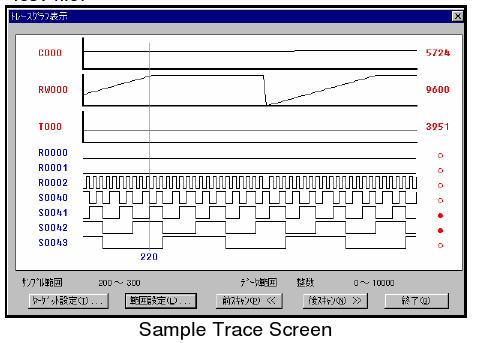
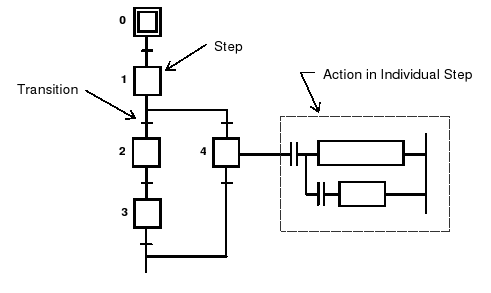


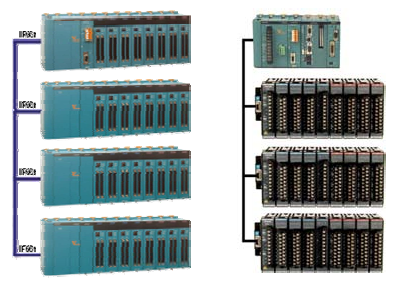
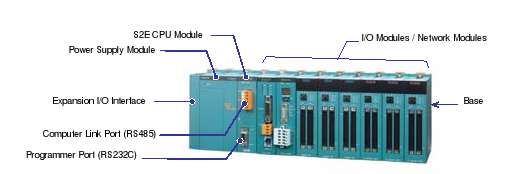
| S2E/ST2 Specification | |||
|---|---|---|---|
| Control Method | Stored program cyclic scan method | ||
| Processor | Overall control: 32-bit microprocessor Instruction execution: Special designed language processor (LP) |
||
| Station Bus | S2T only | ||
| I/O Method | Batch I/O (refresh with main task), direct I/O, or combination | ||
| Number of I/O Points | 1024 points (when 32 points I/O used) | ||
| 2048 points (when 64 points I/O used) | |||
| Local I/O memory: 8192 bits/512 words (1 word = 16 bits) | |||
| Application program | Programming
Language |
Ladder diagram (relay symbol + function block) | |
| Sequential Function Chart (SFC) | |||
Program
Capacity |
Steps: S2E=32K, S2T=32K (PU662T), S2T=64K (PU672T). Includes comments. | ||
Memory
| Main memory: SRAM (battery back-up) | ||
| Auxiliary memory: Flash memory (for program backup). | |||
Instruction
Set |
Basic ladder instructions: 24 types Function instructions: 206 types | ||
| Sequence (contact, coil, timer, counter, etc.) | |||
| Data transfer (single word / double word, register table) | |||
| Arithmetic (single word / double word, binary / BCD, signed / unsigned, floating-point) | |||
| Logic operation (single word/double word, register table, bit table) | |||
| Compare (single word / double word, signed / unsigned, floating-point) | |||
| Program control (jump, For-Next, subroutine, SFC, etc.) | |||
| Functions (limit, trigonometric, square root, integral, PID, function generator, etc.) | |||
| Conversion (ASCII, BCD, 7-Seg, double word integer / floating-point real) | |||
| Others | |||
Execution
Speed |
S2E: 0.11us / contact, 0.22us / coil, 0.65us / transfer, 1.08us / addition, 17.3us / floating-point mpl. | ||
| S2T: 0.09us / contact, 0.18us / coil, 0.54us / transfer, 0.90us / addition, 12.1us / floating-point mpl | |||
| Scan System | Floating scan or constant scan (constant: 10 to 200ms, 10ms units) | ||
| Multi-Tasking | 1 Main program | ||
| 4 Sub-program (1 initial task fixed) | |||
| 1 Timer interrupt (interval: 1 to 1000ms, 1ms units) | |||
| 8 I/O interrupt (task switch 500µs or less) | |||
| 256 Subroutines | |||
| Model No. | GC2PU37ES | GC2PU37GS | GC3PU37HS |
|---|---|---|---|
| CPU | Mobile Pentium P3, 500 Mhz Processor | ||
| OS | Windows 2000 Pro | Windows 2000 Pro | Windows XP Pro |
| Cache Memory | Primary 32 Kb Secondary 256 Kb (CPU on die) | ||
| RAM Memory | 128 Mb | 256 Mb | 256 Mb |
| HDD or | 30 Gb | 30 Gb | 30 Gb |
| Opt Flash Memory | 2 Gb | 2 Gb | 2 Gb |
| USB | 1 Ch. (Type A USB 1.0) | ||
| Serial | 1 Ch. RS232C, 9 pin | ||
| PS2 | 1 Ch. Mouse, 1 Ch. Keyboard | ||
| LAN | 1 Ch. Ethernet, 10 BaseT, 100 BaseTx, RJ45 | ||
| Display | 1 Ch. RGB analog, 2 Mb RAM, 1600 x 1200, 65536 Colors | ||
| PC Card | 2 Slots, PCMCIA Type II | ||
| RAS | CPU Failure Detection (WDT), Thermal Failure Detection, Auto Shutdown on Power Failure | ||
| Note: | Requires S2T CPU and rack with station bus. | ||
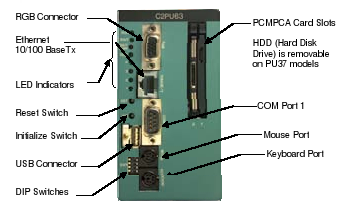
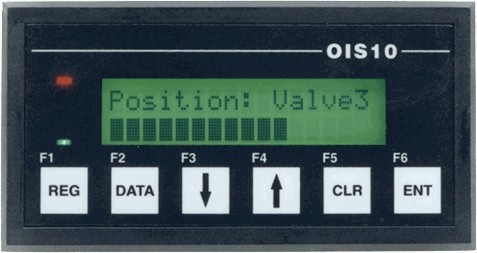
 | 3209
W.9th
street Lawrence, KS 66049 USA | Ph | (785) 841 3089 (785) 841 0434 inform@xtronics.com https://xtronics.com |
Bookmark this page |